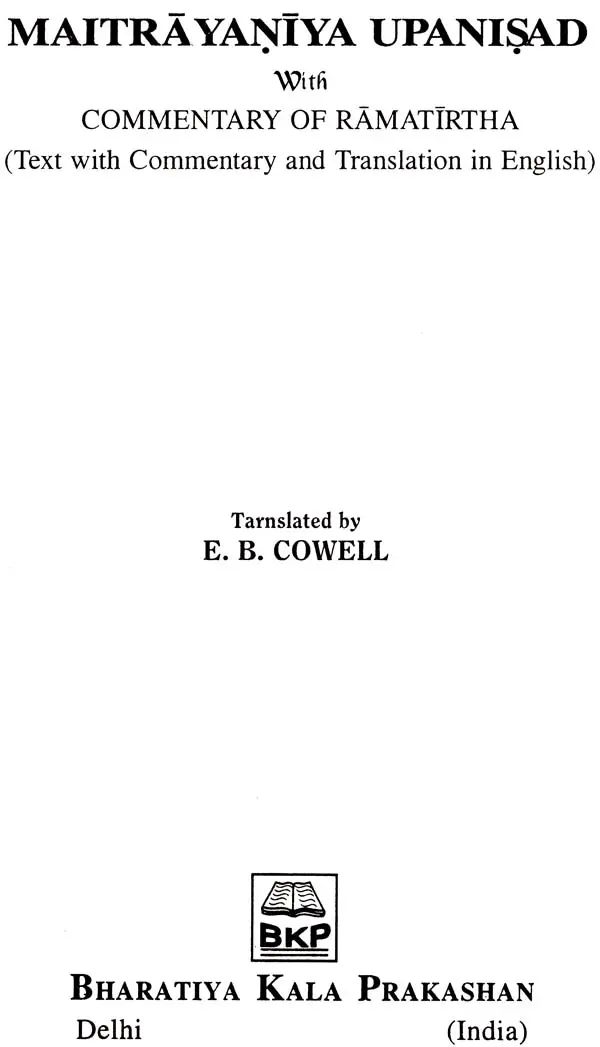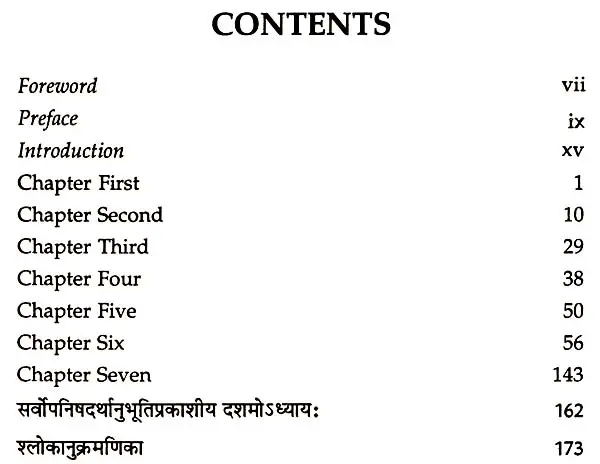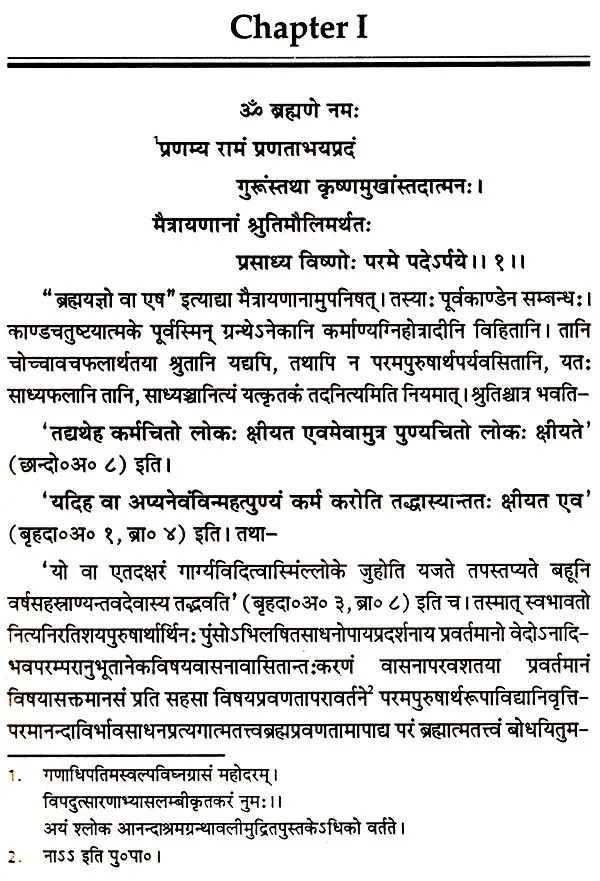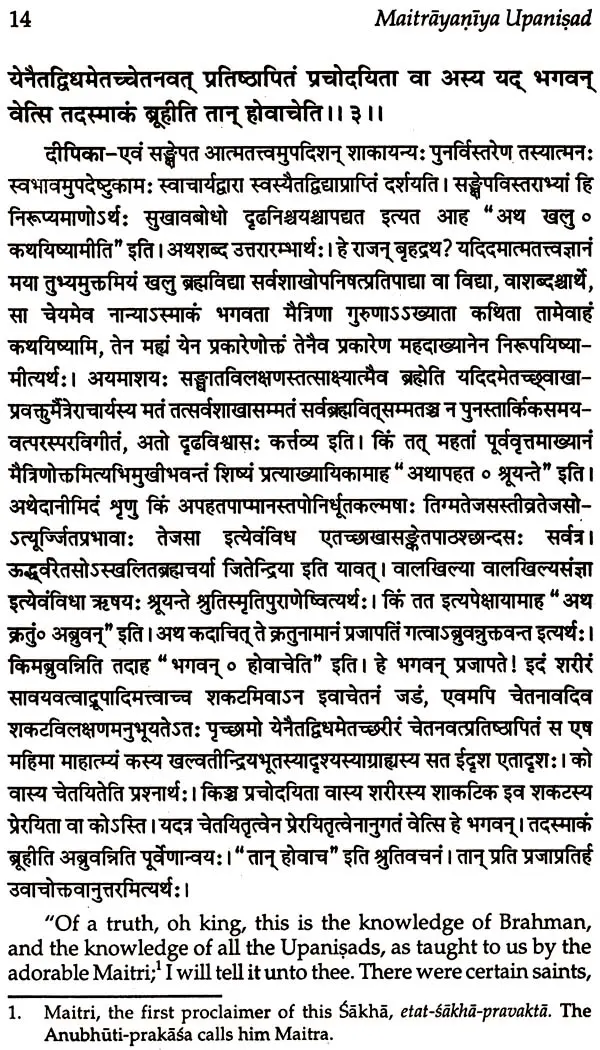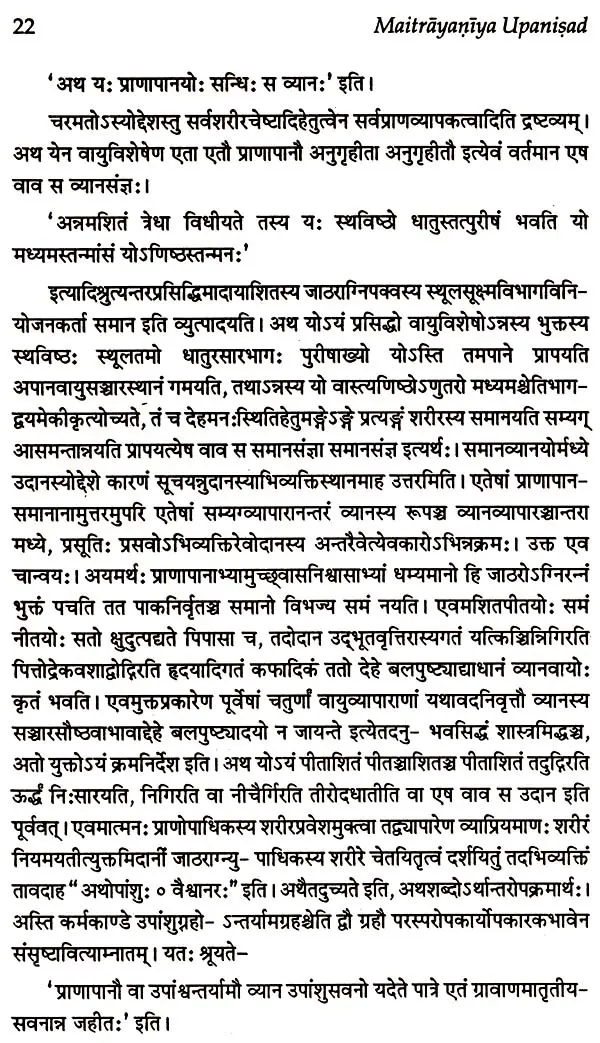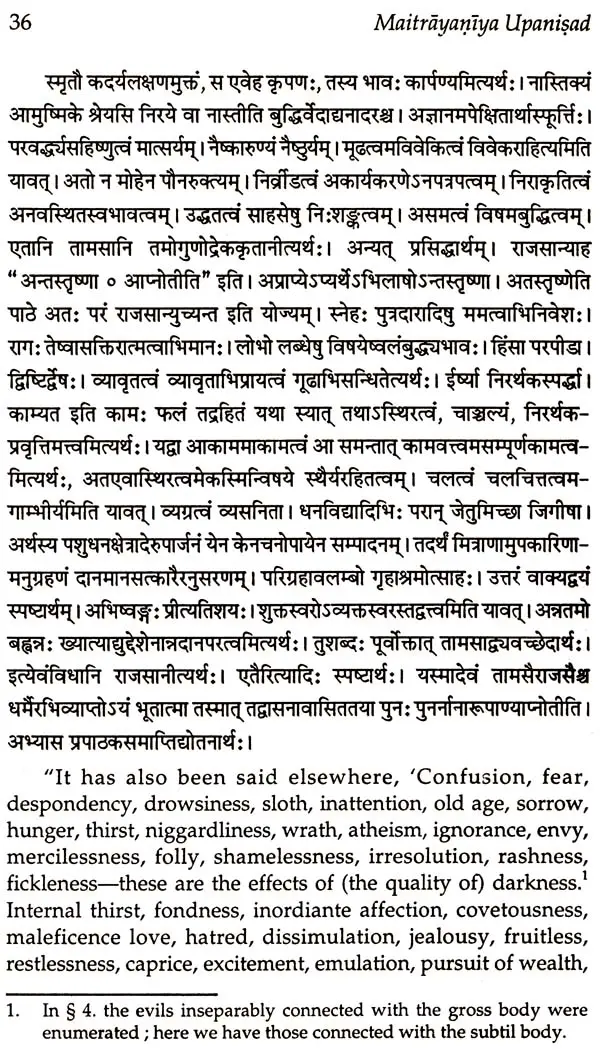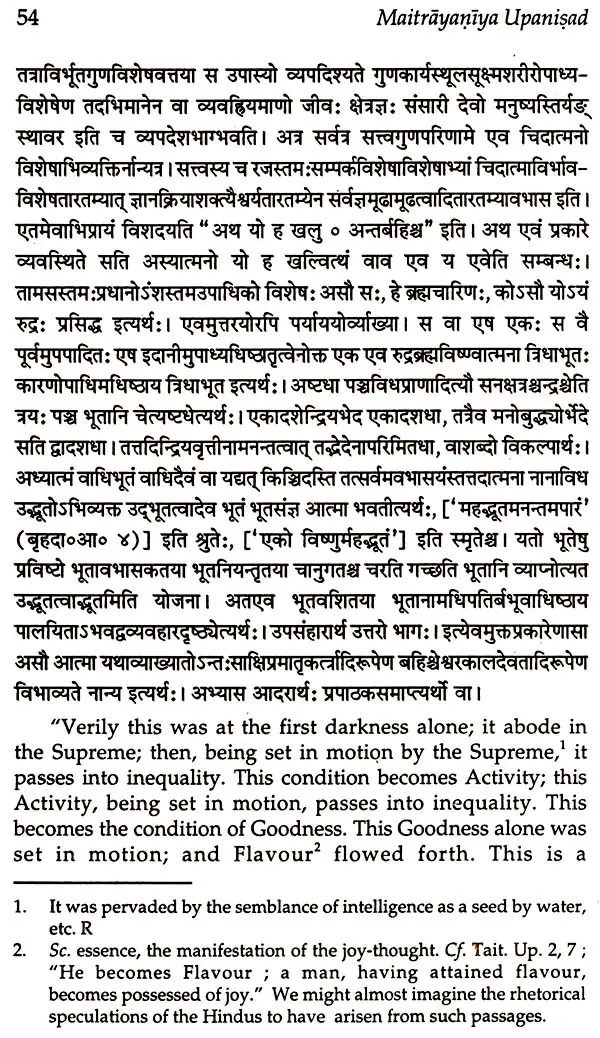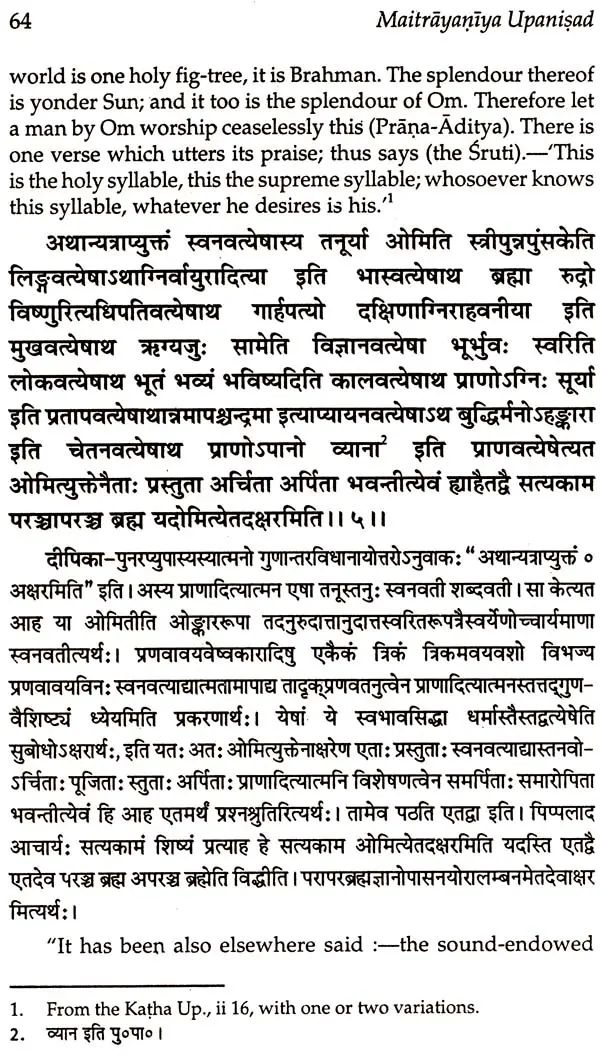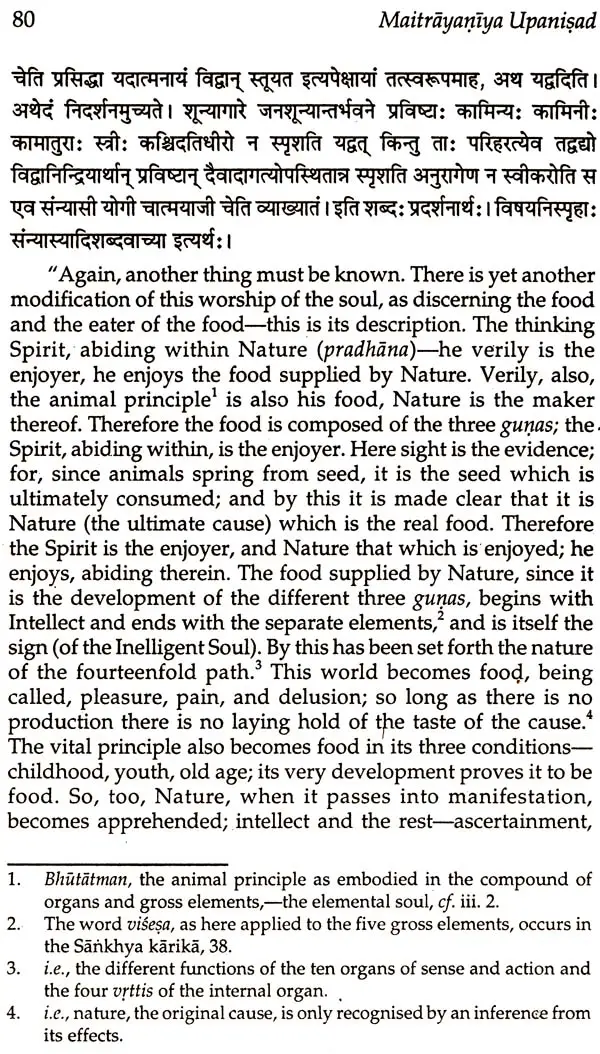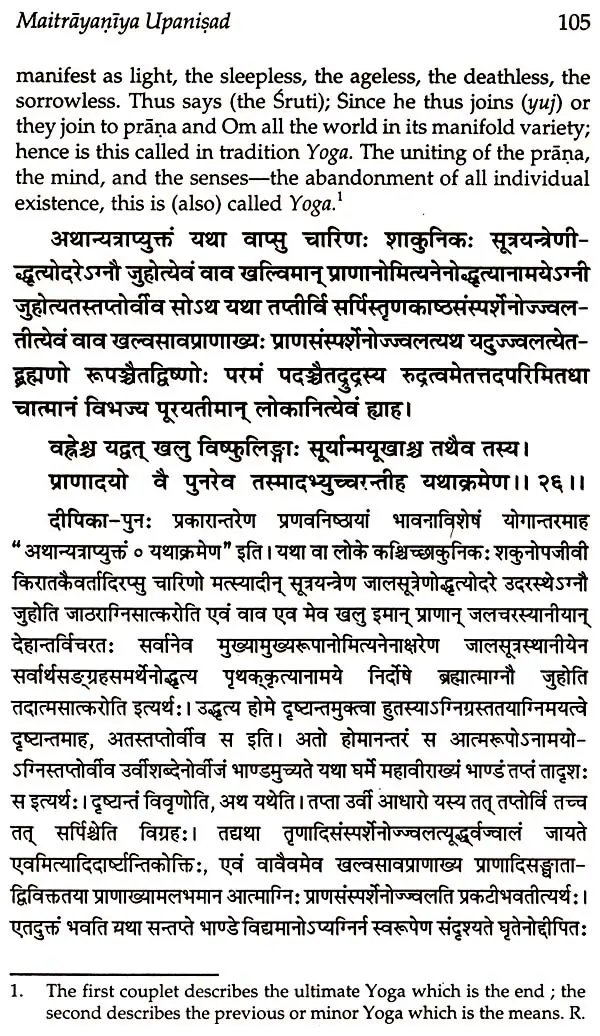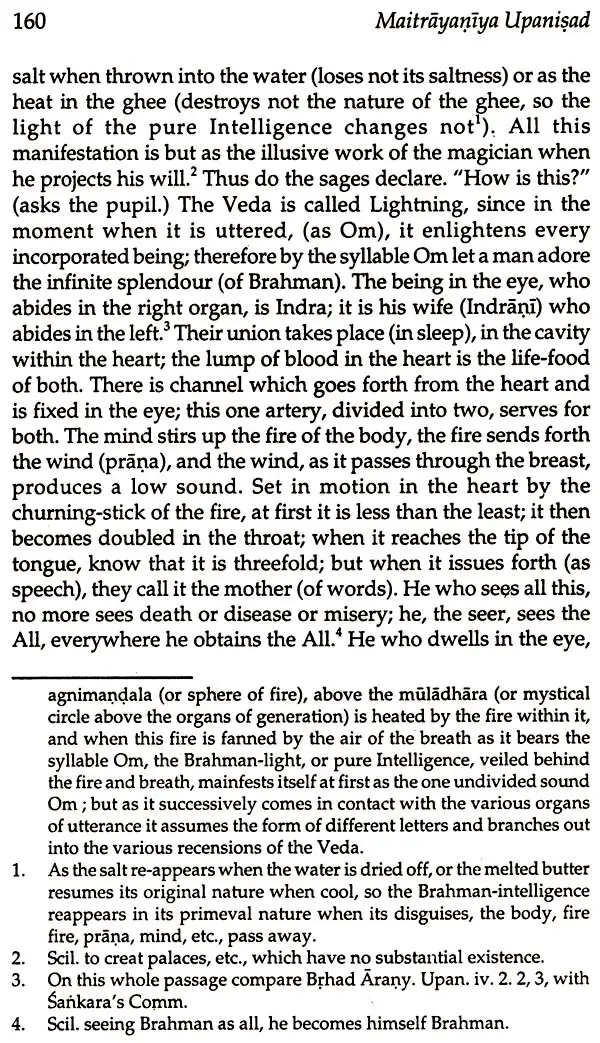
Maitrayaniya Upanisad With Commentary of Ramatirtha (Text With Commentary And Translation In English)
Book Specification
| Item Code: | UAP854 |
| Author: | E.B. Cowell |
| Publisher: | Bhartiya Kala Prakashan |
| Language: | Sanskrit Text with English Transliteration |
| Edition: | 2007 |
| ISBN: | 9788180901556 |
| Pages: | 180 |
| Cover: | HARDCOVER |
| Other Details | 8.50 X 5.50 inch |
| Weight | 390 gm |
Book Description
Maitrayaniya Upanisad belongs to the Maitrayaniya Sakha of the Black Yajurveda. It appears to have originally formed a part of a lost Brahmana belnging to that Sakha, just as the Bṛhadaranyaka comes at the end of the Satapatha Brahmaṇa. The preceding Karma Kanda, according to the commentator, consisted of four parts which described the various ceremonial rites; and the Upanisad was the fitting conclusion by which the initiated devotee is led from ceremonial to spiritual worship.
Its main subject is a dialogue said to have been held between King Brhadratha and the sage Sakayanya, who relates the divine science of Brahman as it had been delivered to him by the sage Maitre or Maitraya, the son of Mitră.
The Maitri or Maitrayaṇiya Upanisad belongs to the Maitrayaniya Sakha of the Black Yajur Veda. It appears to have originally formed a part of a lost Brahmaṇa belonging to that Sakha, just as the Bṛhad Aranyaka comes at the end of the Satapatha Brāhmaṇa. The preceding karma kaṇḍa, according to the Commentator, consisted of four parts which described the various ceremonial rites; and the Upanisad was the fitting conclusion by which the initiated devotee is led from ceremonial to spiritual worship.
Its main subject is a dialogue said to have been held between King Bṛhadratha and the sage Sakayanya, who relates the divine science of Brahman as it had been delivered to him by the sage Maitri or Maitreya, the son of Mitra. In the sequel of the discourse he relates a dialogue held in olden time between the deities called the Valakhilyas and the Prajapati Kratu. This inserted dialogue would seem to have originally ended with the fourth chapter, but in the present recension it is continued to the 29th section of the sixth chapter. Maitri's own discourse ends in the 30th section of the same chapter; but the Upanisad itself continues the subject in a very similar manner to the end of the seventh chapter. We learn from the Commentator that the sixth and seventh chapters were considered to be Khila or supplementary; and he warns his reader not to expect the same strict connection between their various sections, which had been found in the earlier chapters. Even the earlier portion of the Upanisad must be assigned to a late period; and the latter portion must be comparatively modern, as we may judge from the Vaisinava quotations which are sometimes introduced (as e.g., vi, 13, 23).
The proper title of the Upanisad is doubtful. The two MSS. which I used in Calcutta (Kolkata) for this edition, do not give the original text separately from the commentary, but insert it in detached portions which were carefully distinguished by red pigment; and consequently they have no separate colophon for the text; and in the colophons to the Commentary they vary (with M.) between maitryupaniṣad dīpikā and maitrīśākhopaniṣad dipikā. The Poonah MS. (c.) calls it the Maitrāyaṇīya śākhopanisad, and similarly Baron von Eckstein's transcript (E.) gives the name in its closing colophon as Maitrāyaṇīyopaniṣad. Vidyaranya in his Sarvopaniṣad arthānubhutiprakāśa gives the name as the Maitrayaniyopanisad, and in śll. 55, 150, he speaks of Maitra as the śākha pravartaka. It is quoted as the Maitreyopanisad in the Sankhyapravacanabhāṣya, p. 46, with a reference apparently to iii. 2 and vi. 10. I have doubtingly written the name as the Maitri Upanisad; Professor Weber (Ind. Stud. x. 233) prefers Maitri Upanisad.
The great peculiarity of this Upanisad consists in its frequent reference to older works; thus we find in the earlier portion (ch. i.-v.) seven definite quotations introduced by the formulae anyatrapyuktam or ityevam hyaha; these occur respectively in pp. 31, 32; 46; 48; 49; 53; 55, 56; 59. The first is taken from the Bṛhad Aranyaka Upanisad v. 9; but the others I have not been able to identify. The later portion (ch. vi., vii.) bristles everywhere with these quotations, always introduced by one or other of the same formulae; but most of them come from unknown sources. I have noticed that the Chandogya Up. is quoted in vi. 4., the Katha Up. in vi. 4, vi. 30, vii. 9; the Praśna Up. in vi. 5 and vi. 8 (but not as a direct quotation in the latter); the Taittiriya Up. in vi. 11, 12; the Īsā Up. in vii. 9; the Amṛta Bindu Up. in vi. 22, 34 (cf. the transl. given in Ind. Stud. ii. 60-62, śl. 1.2.4.5.17); and Manu (iii. 76) in vi. 37. But the great majority of the quotations remain unidentified.
**Contents and Sample Pages**
